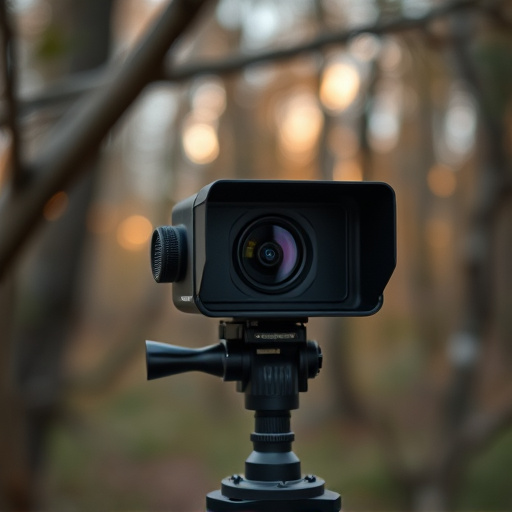Choose discreet locations for hidden cameras, balancing visibility and home security. Opt for high shelves, behind decorations, or everyday items like books or smoke detectors. Position cameras near speakers for clear audio, capturing visuals and sounds in central areas. Integrate cameras into furniture or household items for an elegant, seamless blend with décor. Focus on common areas like kitchens, living rooms, hallways, and bedrooms for optimal security. Disguise cameras behind less obvious objects to maintain privacy while ensuring transparency. Use non-visible mounts and adhesives, test functionality, and consider motion detection for effective, discrete home security.
Uncover the art of securing your home with a hidden nanny cam—a smart way to ensure peace of mind while you’re away. This comprehensive guide explores the best locations for optimal visibility, from discreet placements within everyday household items to strategic coverage of common hotspots. We balance convenience with ethical considerations, offering expert tips on responsible placement and best practices for enhancing your home security.
- Choose Discreet Placements for Optimal Visibility
- Integrate Cameras into Everyday Household Items
- Strategize Coverage: Common Hotspots for Nanny Cams
- Consider Privacy Concerns: Ethical Placement Tips
- Best Practices for Securing and Hiding Your Hidden Camera
Choose Discreet Placements for Optimal Visibility
When setting up a nanny cam or any hidden camera, choosing discreet locations is key for both optimal visibility and home security. The best hidden camera locations are often those that offer clear lines of sight without drawing attention to themselves. For example, placing a camera near a window with a view of common areas like the living room or kitchen can provide valuable footage while remaining hidden from view.
Consider strategic placement on high shelves, behind decorative pieces, or within everyday household items. A nanny cam disguised as a book or a fire detector can go unnoticed while capturing crucial moments. Opt for locations that allow for clear audio as well, such as near a speaker or in a central hallway, to ensure you capture not just visuals but also important sounds.
Integrate Cameras into Everyday Household Items
Integrating security cameras into everyday household items is a clever way to enhance home security without compromising aesthetics. Modern technology offers a range of options, from sophisticated smart plugs to subtle wall outlets and even hidden USB ports in furniture. These devices provide discreet surveillance capabilities while blending seamlessly with your décor.
When considering the best hidden camera locations for home security, think outside the box. For instance, a motion-activated lamp base can double as a surveillance tool, capturing footage of entryways or common areas. Similarly, a fake smoke detector with an internal camera can monitor corridors and stairs without raising suspicion. Such innovative placements ensure your home remains secure while maintaining a comfortable and stylish environment.
Strategize Coverage: Common Hotspots for Nanny Cams
When strategizing coverage with nanny cams, understanding common hotspots within a household is key for comprehensive home security. High-traffic areas like kitchens, living rooms, and hallways are often great places to start as they offer valuable insights into daily routines and interactions. Bedrooms, too, are crucial locations to monitor, especially when children or vulnerable individuals are present.
Consider also less obvious spots such as behind furniture, in bookcases, or even within everyday objects like picture frames or clock radios. These best hidden camera locations can provide discreet yet effective surveillance, enhancing the overall security of your home without compromising aesthetics or comfort.
Consider Privacy Concerns: Ethical Placement Tips
When considering nanny cam placement, it’s crucial to balance safety and privacy. While hidden cameras can provide peace of mind, positioning them ethically is paramount. Avoid areas where individuals expect privacy, such as bathrooms, bedrooms, or personal workspaces. Instead, focus on high-traffic zones like kitchens, living rooms, and common areas accessible to all household members.
Opt for creative disguises that seamlessly blend the camera into the environment. Mounting a device under a table or inside a decorative vase can be less intrusive than wall-mounted cameras. Remember, responsible use of home security technology means prioritizing transparency and consent, ensuring everyone in the home is aware of surveillance measures in place.
Best Practices for Securing and Hiding Your Hidden Camera
When placing a hidden camera, consider the best hidden camera locations within your home for optimal security and minimal detection. High-traffic areas like hallways and living rooms might be convenient but also more visible. Instead, opt for strategic spots like behind picture frames, under clocks, or inside everyday objects like fake electrical outlets or smoke detectors. These seemingly innocent items can house advanced surveillance equipment, providing clear footage without raising suspicion.
To ensure the best results, secure your hidden camera discreetly using non-visible adhesives and mounts. Regularly test the device’s functionality and battery life to maintain uninterrupted monitoring. Additionally, choose a camera with motion detection capabilities and infrared lighting for night vision, enhancing your home security further. By following these best practices, you can create an effective surveillance system without compromising on aesthetics or raising red flags.
When strategically placing a nanny cam, consider everyday household items as potential disguises. By integrating cameras into common objects like light switches, power outlets, or even fake rocks, you can ensure optimal visibility and enhanced home security without raising suspicion. Remember to prioritize ethical placement, focusing on areas accessible to all parties involved, and always respect privacy concerns. Following these best practices will help keep your home secure while maintaining an atmosphere of trust and transparency.
